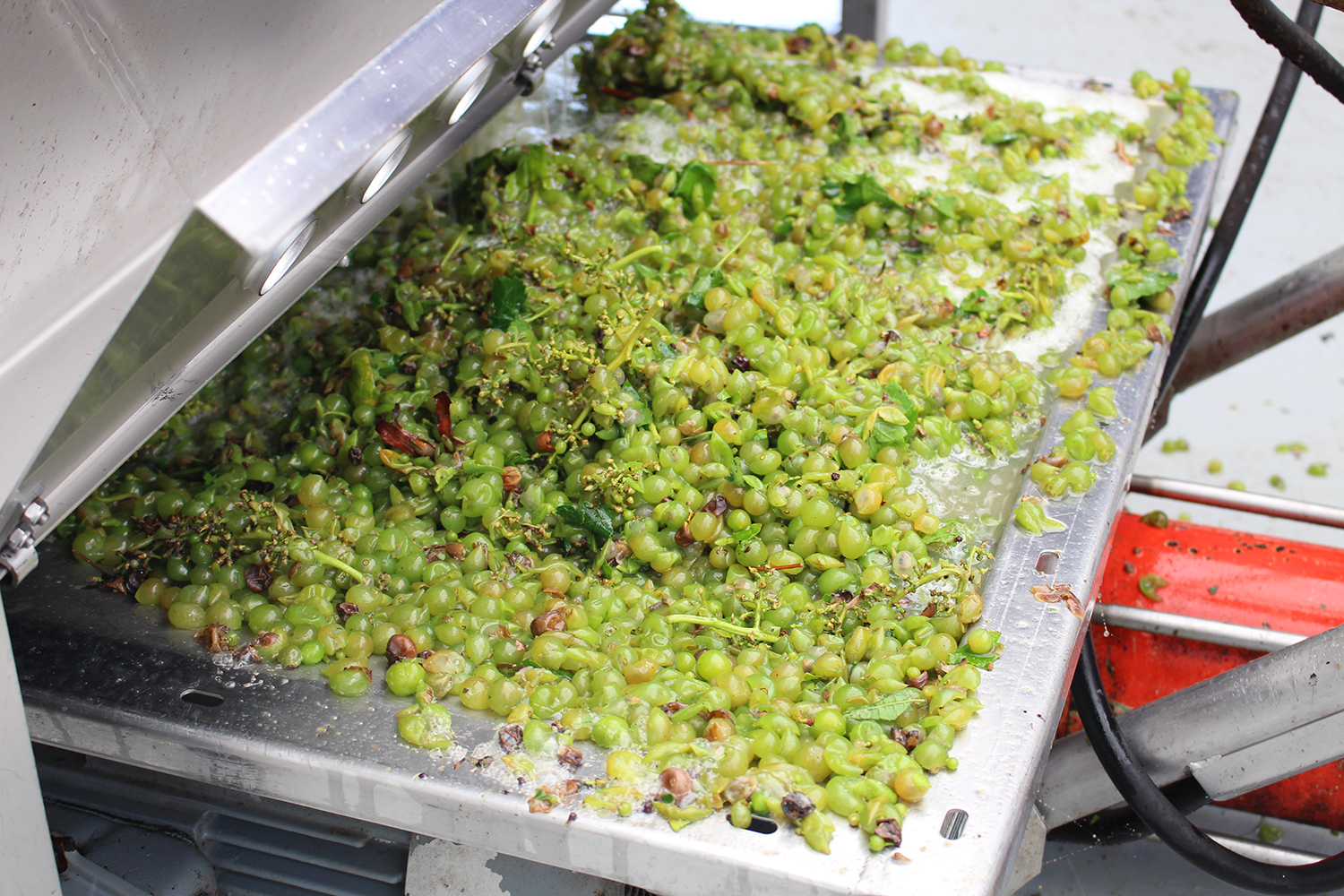2017 Harvest Update: September 1st
 Report 1 – September 1, 2017
Report 1 – September 1, 2017
Being a grape grower in the Lake Erie Region never gets boring. Every growing season, it seems, has its own progression, which really starts the year before when the primordial buds—those that will bear fruit the following year—are formed. So, looking back, we note that we had a stellar year in 2016, resulting in healthy vines that were in prime condition going into a what turned out to be a very mild winter.
We avoided early spring bud damage, even though we had unseasonably warm temperatures from mid-February through early March that came close to initiating bud growth. It cooled off after that, and we continued to be ahead of schedule through most of the rest of the growing season. Fruit set (the number of berries that actually develop on the new clusters after bloom) was good, setting the stage for a relatively large crop.
Summer turned out to be cool and wet—not really what we like to see for our grapes. Molds and mildews can start to show up, and it takes a concentrated effort by the grower to keep them under control. Our growers understand the importance of this effort, and the vineyards that I have seen in my visits are all clean and healthy. For most of the wine varieties, adjustments were made to reduce the amount of fruit the vine was carrying and optimize bunch development – removing excess shoots and clusters, removing leaves to allow more sunlight to get to the clusters and allow better air movement to aid in keeping molds and mildews at bay. At the end of July, the weather pattern changed, and became much drier but cooler temperatures remained with nighttime temperatures dipping into the 50’s.
This is where it gets interesting. Grapes reach a point in their growth cycle that we refer to as veraison, marking the final stages of ripening and flavor development. It is during this time that pigment starts to develop in the skins, most noticeably of course, in red wine varieties, and all-important varietal character develops. Weather during this time seems to be more critical to overall quality than earlier in the season; a warm and dry post-veraison period can more than make up for cool and wet conditions earlier in the year.
Veraison is triggered by cool nights like we tend to see starting the end of August. This year, though, with cooler daytime and nighttime temperatures earlier than normal, we observed veraison beginning in our Cabernet Franc on Aug 15, almost 2 weeks ahead of schedule. What this will mean for this year’s crop wine quality is still unknown—but it is encouraging. Beginning veraison early gives more ripening time and has the potential to allow for exceptional ripeness and flavor development. We’ll start to know more as we continue testing grapes in the vineyard, and the final answer will be apparent at harvest time.
Stay tuned to my upcoming posts to see how the story develops. Cheers!
Bob Green
PIWC Executive Winemaker


